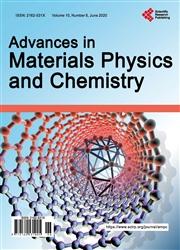La2O3/Fe2O3-CeO2 Composite Oxide Catalyst and Its Performance
引用次数: 2
Abstract
The La2O3/Fe2O3-CeO2 composite oxide catalysts were prepared by coprecipitation method, sol-gel method and hydrothermal method. The effect of preparation methods on structure morphology and photocatalytic properties of La2O3/Fe2O3-CeO2 samples was investigated. The results show that the cubic CeO2 structure can be obtained at 600℃. The rod-shaped sample prepared by coprecipitation method, displays the highest crystalline and the strongest diffraction peak intensity. The spherical sample is acquired from sol-gel method, while the small granular sample prepared by hydrothermal method tends to aggregate. The maximum specific surface area of the sample prepared by coprecipitation method is 76.21 m2/g, the minimum specific area of the sample from sol-gel method is 32.66 m2/g and the maximum pore size is 13.84 nm, while the minimum pore volume and pore size of the sample by hydrothermal method are 0.038 cm3/g and 3.95 nm respectively. The band gap energy of catalyst samples is in the following order: sample-CP < sample-SG < sample-HT. The sample obtained by coprecipitation method has the best catalytic degradation performance for methylene blue. Under the excitation of visible light, the degradation rate was 99.58% at 50 minutes, which was higher than those of sol-gel method and hydrothermal method by 5.58% and 9.54% respectively. The catalytic degradation reaction is a first-order kinetic model: ln (c0/ct) = kt + qe. The maximum k-value of the sample degradation process obtained by coprecipitation method is 0.074 min-1.La2O3/Fe2O3-CeO2复合氧化物催化剂及其性能
采用共沉淀法、溶胶-凝胶法和水热法制备了La2O3/Fe2O3-CeO2复合氧化物催化剂。研究了制备方法对La2O3/Fe2O3-CeO2样品结构形态和光催化性能的影响。结果表明,在600℃时可以获得立方CeO2结构。采用共沉淀法制备的棒状样品显示出最高的结晶度和最强的衍射峰强度。球形样品是通过溶胶-凝胶法获得的,而通过水热法制备的小颗粒样品倾向于聚集。共沉淀法制备的样品的最大比表面积为76.21m2/g,溶胶-凝胶法制备样品的最小比面积为32.66m2/g,最大孔径为13.84nm,而水热法制备试样的最小孔体积和孔径分别为0.038cm3/g和3.95nm。催化剂样品的带隙能量按以下顺序排列:样品CP<样品SG<样品HT。共沉淀法得到的样品对亚甲基蓝的催化降解性能最好。在可见光激发下,50分钟降解率为99.58%,比溶胶-凝胶法和水热法分别高5.58%和9.54%。催化降解反应为一级动力学模型:ln(c0/ct)=kt+qe。通过共沉淀法获得的样品降解过程的最大k值为0.074min-1。
本文章由计算机程序翻译,如有差异,请以英文原文为准。
求助全文
约1分钟内获得全文
求助全文

 求助内容:
求助内容: 应助结果提醒方式:
应助结果提醒方式:


